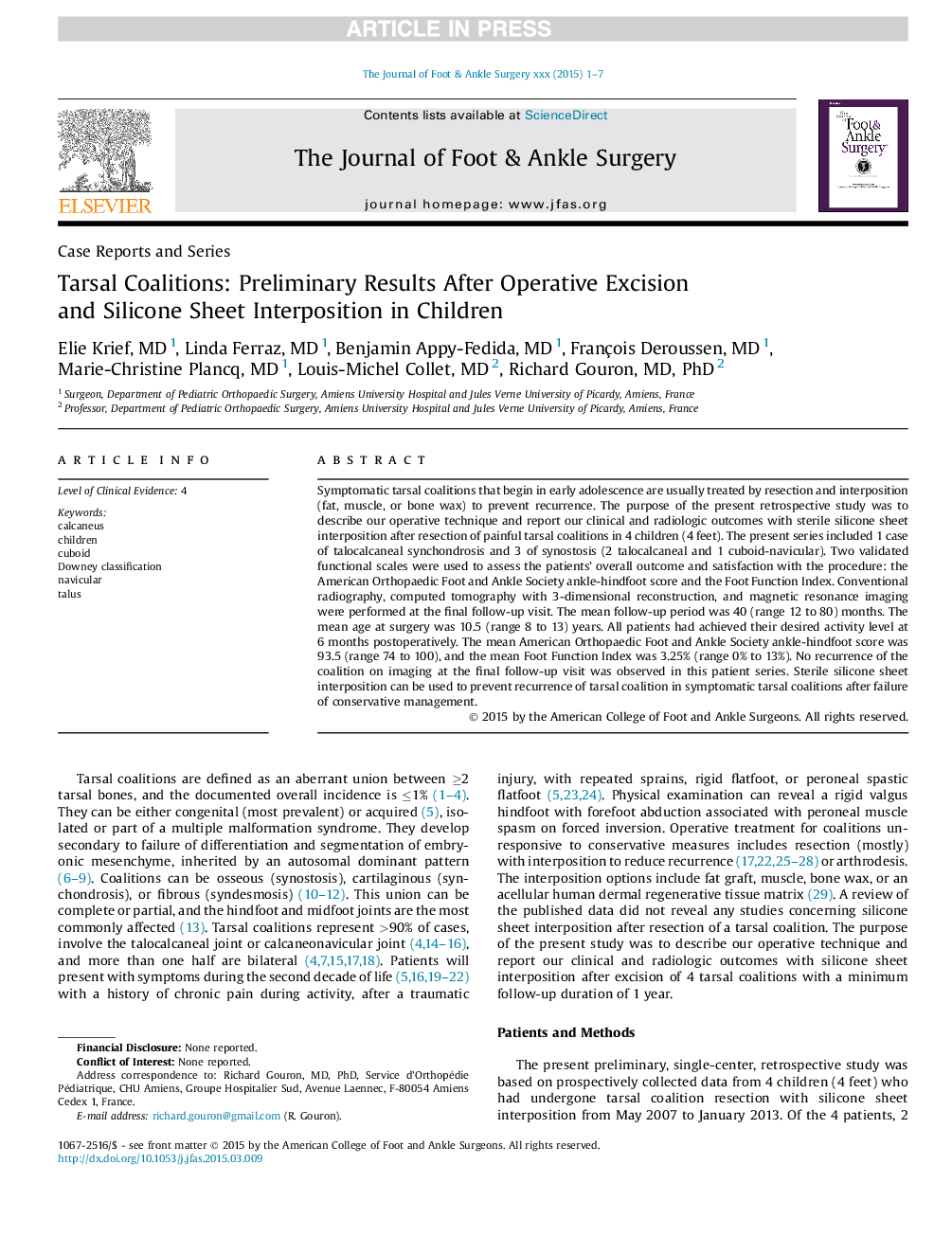| Article ID | Journal | Published Year | Pages | File Type |
|---|---|---|---|---|
| 5576145 | The Journal of Foot and Ankle Surgery | 2016 | 7 Pages |
Abstract
Symptomatic tarsal coalitions that begin in early adolescence are usually treated by resection and interposition (fat, muscle, or bone wax) to prevent recurrence. The purpose of the present retrospective study was to describe our operative technique and report our clinical and radiologic outcomes with sterile silicone sheet interposition after resection of painful tarsal coalitions in 4 children (4 feet). The present series included 1 case of talocalcaneal synchondrosis and 3 of synostosis (2 talocalcaneal and 1 cuboid-navicular). Two validated functional scales were used to assess the patients' overall outcome and satisfaction with the procedure: the American Orthopaedic Foot and Ankle Society ankle-hindfoot score and the Foot Function Index. Conventional radiography, computed tomography with 3-dimensional reconstruction, and magnetic resonance imaging were performed at the final follow-up visit. The mean follow-up period was 40 (range 12 to 80) months. The mean age at surgery was 10.5 (range 8 to 13) years. All patients had achieved their desired activity level at 6Â months postoperatively. The mean American Orthopaedic Foot and Ankle Society ankle-hindfoot score was 93.5 (range 74 to 100), and the mean Foot Function Index was 3.25% (range 0% to 13%). No recurrence of the coalition on imaging at the final follow-up visit was observed in this patient series. Sterile silicone sheet interposition can be used to prevent recurrence of tarsal coalition in symptomatic tarsal coalitions after failure of conservative management.
Related Topics
Health Sciences
Medicine and Dentistry
Orthopedics, Sports Medicine and Rehabilitation
Authors
Elie MD, Linda MD, Benjamin MD, François MD, Marie-Christine MD, Louis-Michel MD, Richard MD, PhD,
